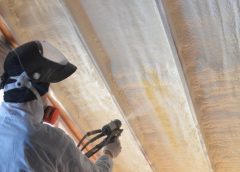Are you familiar with the term R-value? Whether you’re a professional contractor or a homeowner working on renovations, everyone should understand this measure and its importance. Keep reading to discover more about R-value and why it matters when choosing insulation for your home or commercial building.
What Is R-Value?
R-values measure how well an insulation material can prevent heat from entering and leaving a building. Each insulation material has a unique R-value due to differing compositions, densities, thicknesses, and other qualities. The higher the R-value, the better. A greater value means less heat transference and drafts throughout a building.
When considering the R-values of certain insulation types, remember that this rating is measured per inch. This means you can add additional protection by installing several inches or layers of insulation if your project calls for it.
Importance of R-Value for Insulation
When it comes to choosing insulation for a home or business, the material’s R-value is a crucial factor to consider. Because R-value refers to a material’s ability to resist heat flow, it’s related to the success of the material as insulation. The more heat-resistant your insulation, the more effective it will be at regulating temperatures.
For example, during scorching summer months, you don’t want warm air to travel indoors through your insulation. Choosing a highly heat-resistant insulation can help regulate temperatures, which puts less strain on your building’s heating and cooling system. This can lead to savings on your energy bills and an overall more comfortable indoor atmosphere.
Which Insulations Have the Highest R-Values?
Now that you know what R-value is and why it’s so important, you might be wondering which materials have the greatest R-values. When considering insulation for your home or business, choose materials such as spray foam or rigid panel insulation. These materials have the highest R-values, weighing in around R-5 to R-7 per inch. Materials such as fiberglass panels and rolls are less expensive, but their R-value suffers for it. This is one reason why spray foam insulation is better than fiberglass. You can also explore the distinct types of spray foam, such as open-cell versus closed-cell foams.
Understanding R-value and its impact on building insulation is crucial for any contractor or homeowner. Remember these R-value basics as you explore diverse types of insulation for your next construction or renovation project.


